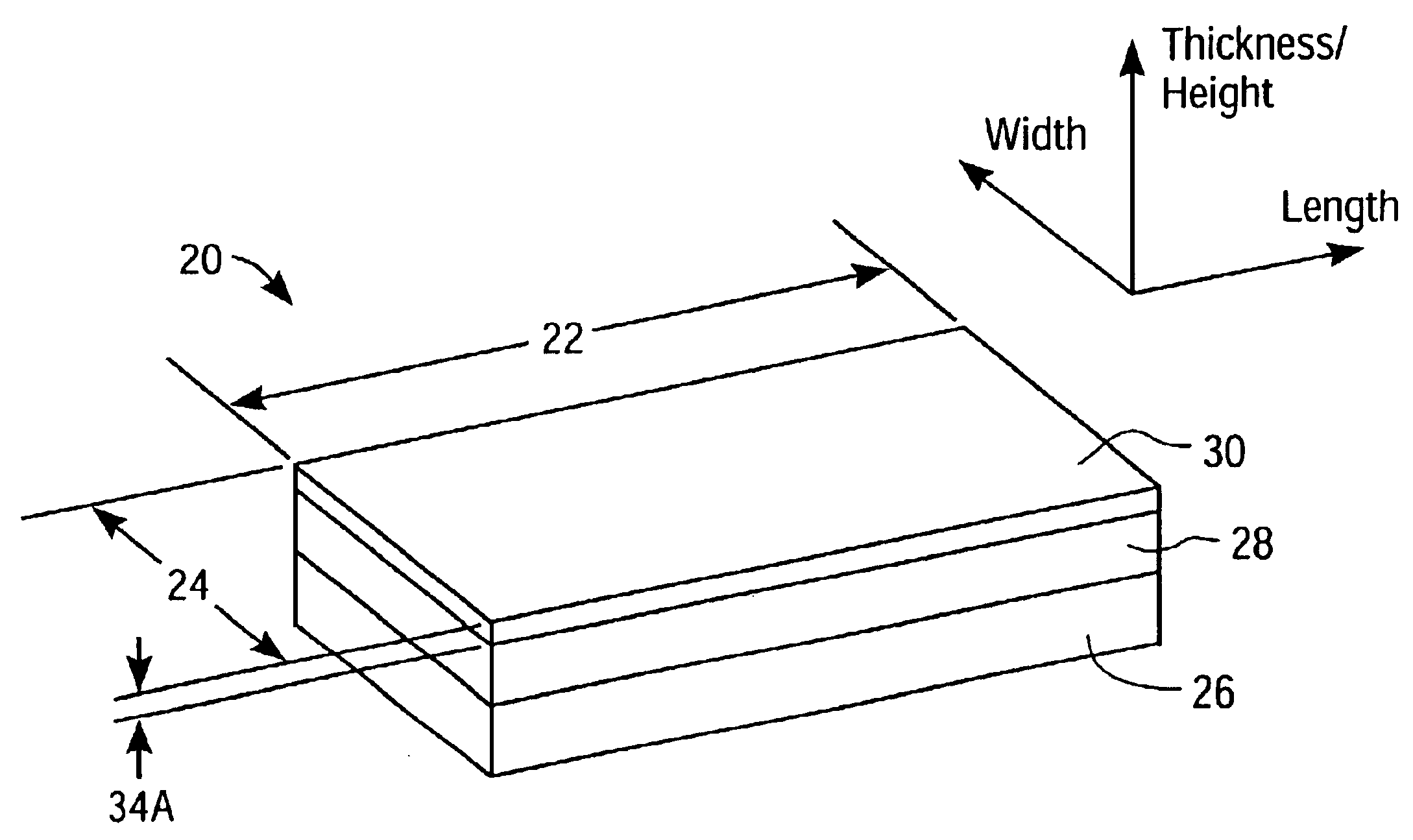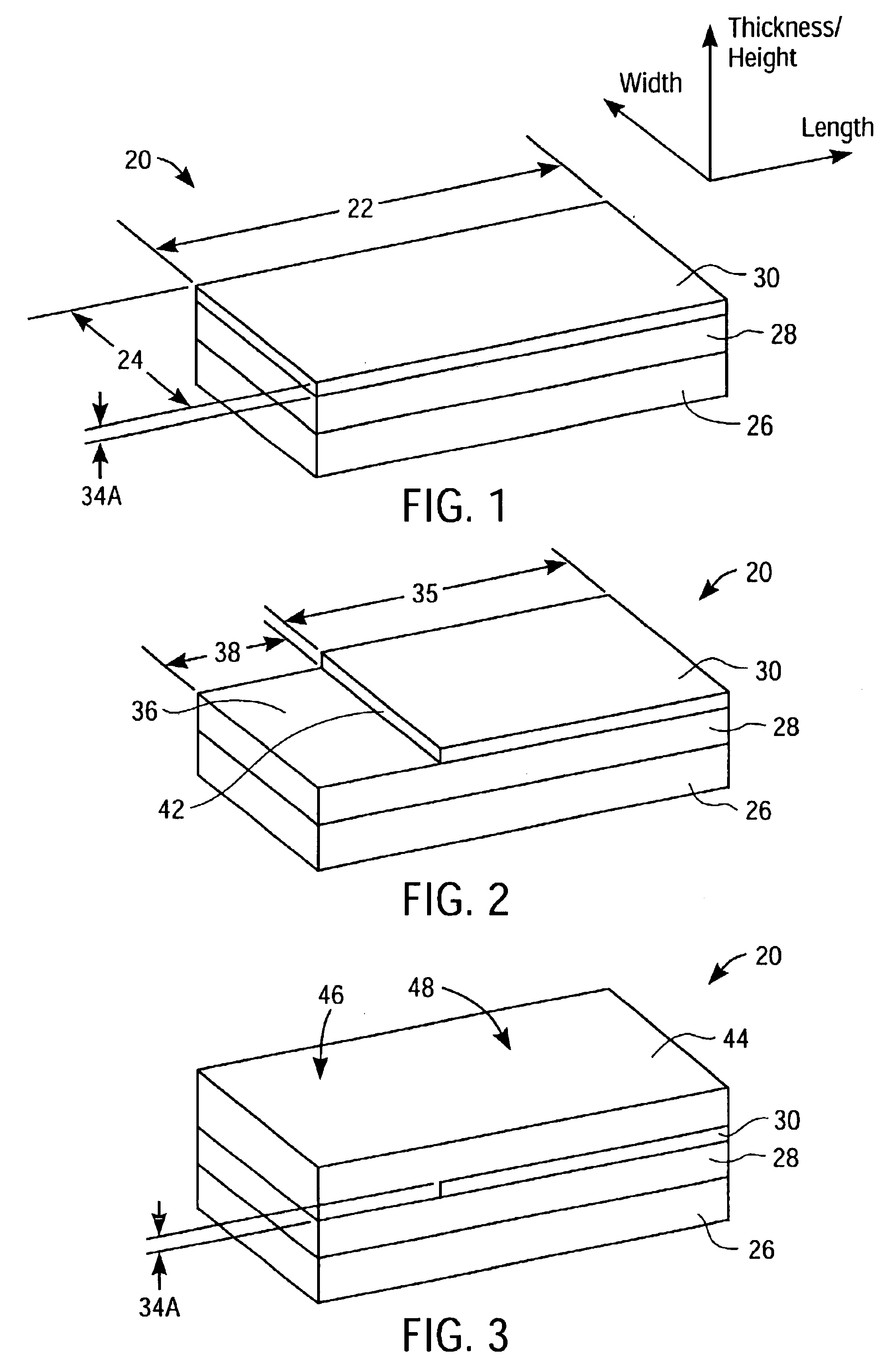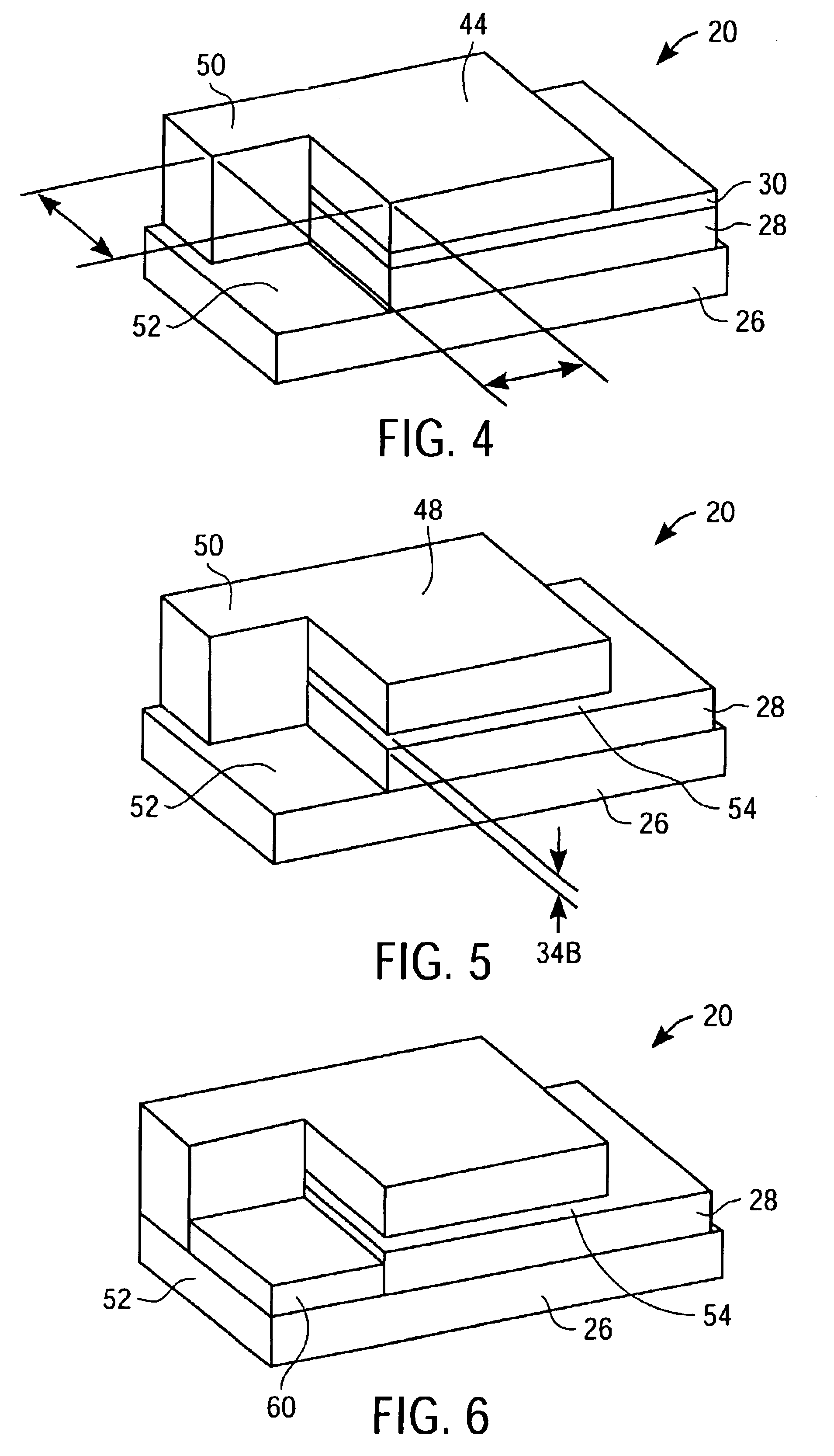Method of forming an element of a microelectronic circuit
- Summary
- Abstract
- Description
- Claims
- Application Information
AI Technical Summary
Problems solved by technology
Method used
Image
Examples
Embodiment Construction
[0022]In the following description, terms such as horizontal, vertical, width, length, height, and thickness are used. These terms are used to describe and define orientations of structures and surfaces relative to one another, and should not be interpreted as pertaining to an absolute frame of reference.
[0023]FIG. 1 of the accompanying drawings illustrates a portion 20 out of a partially fabricated wafer, having a width 22 and a length 24. The portion 20 includes a conventional silicon monocrystalline substrate 26, a supporting silicon dioxide (SiO2) dielectric layer 28 formed on the monocrystalline substrate 26, and a silicon nitride (Si2NO3) sacrificial layer 30 formed on the dielectric layer 28. The substrate may, for example, be silicon (Si), germanium (Ge), silicon germanium (SixGey), gallium arsenide (GaAs), InSb, GaP, GaSb, or carbon. The sacrificial layer 30 has a thickness 34A which is extremely thin, typically on the order of a few nanometers. A process for forming 15 nm ...
PUM
 Login to View More
Login to View More Abstract
Description
Claims
Application Information
 Login to View More
Login to View More - R&D
- Intellectual Property
- Life Sciences
- Materials
- Tech Scout
- Unparalleled Data Quality
- Higher Quality Content
- 60% Fewer Hallucinations
Browse by: Latest US Patents, China's latest patents, Technical Efficacy Thesaurus, Application Domain, Technology Topic, Popular Technical Reports.
© 2025 PatSnap. All rights reserved.Legal|Privacy policy|Modern Slavery Act Transparency Statement|Sitemap|About US| Contact US: help@patsnap.com



